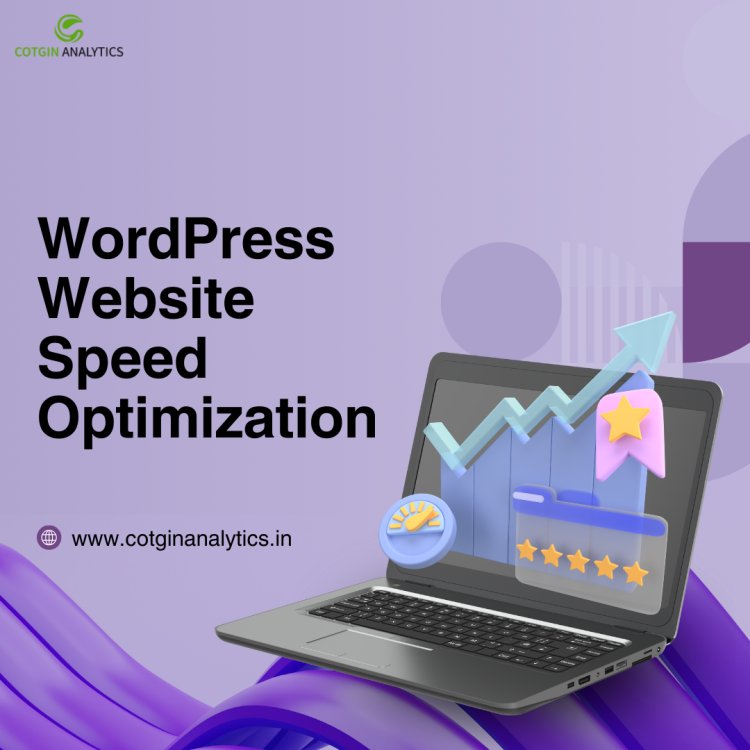How We Do WordPress Website Speed Optimization in 2024
Share this Post to earn Money ( Upto ₹100 per 1000 Views )

In today's fast-paced digital world, website speed plays a crucial role in user experience, search engine ranking, and overall site performance. A slow-loading WordPress website can drive visitors away, increase bounce rates, and negatively impact your business. To prevent this, it is essential to optimize your WordPress website for speed. But how exactly do we go about this? In this article, we'll break down the steps and best practices we follow to ensure that your WordPress website is running at top speed.
1. Comprehensive Speed Analysis
Before diving into optimization, the first step we take is to analyze the current speed of your website. This involves using tools like Google PageSpeed Insights, GTmetrix, and Pingdom to identify the areas where your website is lagging. We pay attention to metrics like load time, server response time, and file sizes. This comprehensive analysis helps us pinpoint the exact elements that are slowing down your website.
2. Optimizing Images
Images are often the biggest culprits when it comes to slow-loading websites. Large, unoptimized images can take up a significant amount of bandwidth, causing your site to load slowly. We address this issue by:
- Compressing Images: We use tools like TinyPNG or ShortPixel to compress images without losing quality. This reduces the file size and speeds up loading times.
- Implementing Lazy Loading: Lazy loading ensures that images only load when they come into the user’s viewport. This reduces the initial load time and makes your site appear faster.
- Choosing the Right Format: We convert images to modern formats like WebP, which are smaller in size but retain high quality.
3. Minifying CSS, JavaScript, and HTML
The next step involves optimizing your website’s code. Even minor issues in your CSS, JavaScript, and HTML files can cause significant delays in load times. We improve your site’s performance by:
- Minifying Files: Minification removes unnecessary characters (like spaces and line breaks) from your code without affecting its functionality. We use tools like Autoptimize and W3 Total Cache to automate this process.
- Combining Files: Instead of loading multiple CSS and JavaScript files, we combine them into one or two files. This reduces the number of HTTP requests and speeds up your site.
- Deferring JavaScript Loading: By deferring non-essential JavaScript files, we ensure they only load after the rest of your page has fully loaded.
4. Enabling Caching
Caching is one of the most effective ways to speed up your WordPress website. By storing a static version of your website in the user’s browser, caching reduces the need to reload resources every time a user visits your site. Our caching strategy includes:
- Browser Caching: We configure browser caching so that static resources like images, CSS, and JavaScript files are stored locally on the user’s device. This drastically reduces load times on subsequent visits.
- Page Caching: We implement page caching plugins like WP Super Cache or W3 Total Cache to store static HTML copies of your pages, which are served to users instead of dynamic content.
- Object Caching: For dynamic websites, we use object caching to store database query results, reducing the time needed to fetch data from the database.
5. Using a Content Delivery Network (CDN)
A Content Delivery Network (CDN) distributes your website’s content across multiple servers around the world. When a user visits your site, the CDN delivers content from the server closest to their location, which speeds up load times. We set up and configure CDNs like Cloudflare or StackPath to enhance your website’s performance, especially for global audiences.
6. Optimizing Database
Over time, your WordPress database can become bloated with unnecessary data, which can slow down your website. We optimize your database by:
- Cleaning Up: We remove redundant data like post revisions, spam comments, and transients using plugins like WP-Optimize.
- Optimizing Database Tables: We regularly optimize your database tables to reduce their size and improve query performance.
- Setting Up Automatic Cleanups: We schedule regular database cleanups to ensure your site remains optimized over time.
7. Choosing a Reliable Hosting Provider
The performance of your hosting provider plays a significant role in your website’s speed. A shared hosting environment can slow down your site, especially during peak traffic times. We recommend:
- Upgrading to Managed WordPress Hosting: Managed hosting providers like SiteGround, WP Engine, or Kinsta offer optimized servers specifically designed for WordPress, leading to better performance.
- Using a VPS or Dedicated Server: For high-traffic websites, we suggest upgrading to a Virtual Private Server (VPS) or dedicated server for faster load times and better resource management.
8. Implementing Gzip Compression
Gzip compression reduces the size of your HTML, CSS, and JavaScript files by up to 70%, making them faster to download. We enable Gzip compression on your server, ensuring that your website loads faster while consuming less bandwidth.
9. Monitoring and Maintenance
Speed optimization is not a one-time task; it requires ongoing monitoring and maintenance. We regularly check your website’s performance, update plugins and themes, and re-optimize images and files as needed. We also stay updated with the latest speed optimization techniques to keep your website running smoothly.
Conclusion
Optimizing your WordPress website for speed is crucial for providing a positive user experience, improving SEO rankings, and boosting conversions. By following these steps, we ensure that your site is fast, efficient, and capable of handling traffic without any hiccups. Whether you’re looking to improve your site’s performance or start from scratch, our team is here to help you achieve the speed and efficiency your website deserves.















